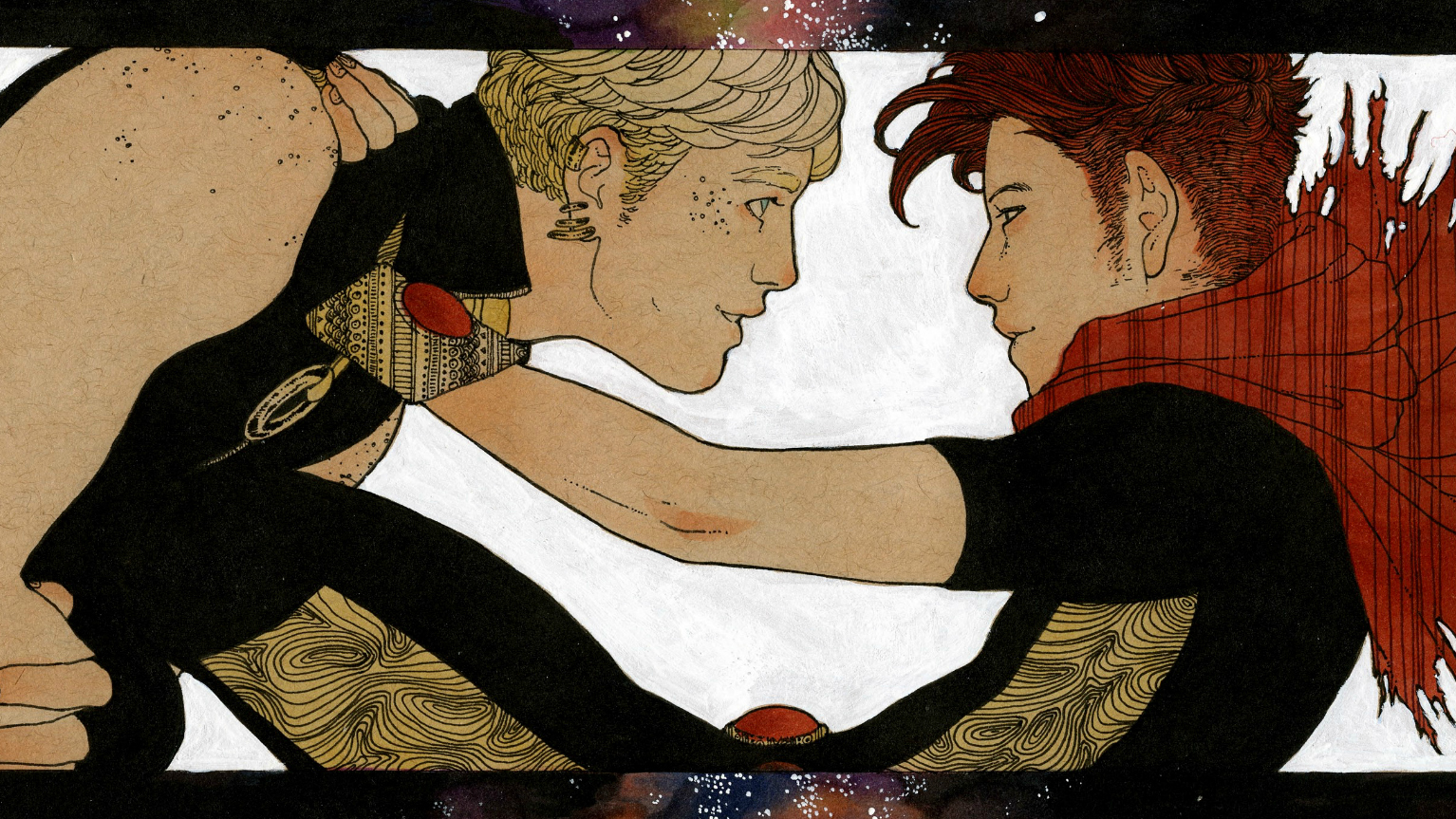
January 27, 2016, by Guest Blogger
Queer Narratives and Intersectional Sexuality
The paradigm of queer storytelling has seen a massive shift in recent decades.
While queer characters – usually gay men – started off as the butt of severely outdated punchlines when they first breached the mainstream, the advancement of LGBTQ+ rights worldwide, combined with a greater understanding of the various identities that make up the community as well as a more nuanced approach to the various issues that affect it, has led to a more diverse way to portray such characters in fiction.
Graphic novels and comic books have an interesting history with these portrayals. The Comics Code, implemented largely in the USA but having an impact worldwide, prevented portrayals of queer characters or, indeed, any reference to non-heterosexuality until 1989. Even then, it tried to regulate portrayals that were deemed to be “in bad taste”, although it should be noted that this did not apply solely to portrayals of sexuality. The Code was only abandoned in 2011, with Marvel having been one of the first to scrap it in 2001.
It was this very late rejection of a restrictive and prescriptive manual of acceptability that really allowed the form to grow into the subversive, norm-challenging genre that it has become now. While groups like the X-Men had always been metaphorical stand-ins for issues such as the civil rights movement and, later, the gay rights movement, the 21st century finally allowed comics artists and writers to tap into a deeper and richer well of characters.
The Young Avengers series, created by Kieron Gillen and Jamie McKelvie, is a personal favourite when it comes to the range of queer characters being portrayed. Among the many threads it touches on are four distinct queer narratives that show a definite understanding of intersectional oppressions and concerns.
The first two concerns are developed or “First World” queer issues. Wiccan provides a detailed reading of the intersection between queerness and mental health. By tracing his history of being bullied in his origin issues, to tackling depression and questioning parenthood, the series manages to take the debate beyond simply having a visible gay character and actually exploring how being queer in a heteronormative society – combined with the struggles of being an all-powerful superhero in adolescence – can be problematic. The second issue of the B (and the unmentioned P of pansexuality) within the wider LGBTQ+ political discourse, as expressed by the characters Hawkeye, Noh-Varr and Prodigy. All three have displayed fluidity in their sexualities, ranging from early explorations of bisexuality to full-fledged declarations of pansexuality. This provides an unspoken critique of how both in-universe and real-world attention of queer representation in the comics has focused on the gay male couple of Wiccan and Hulkling.
Hulkling himself provides the genesis for the first of the two developing or “Third World” queer issues the series touches on. His alien parentage makes him a natural representation of the queer immigrant within broader American or Western culture. Delving deeper into his shape-shifting abilities, a legacy of his Skrull and Kree heritage, can offer a critical look at the “ideal” in queer discourse as being a white male with blond hair. Finally, looking at how Loki’s comments regarding Asgardian notions of gender and sexuality, and Miss America’s experiences coming from a parallel universe can provide an anti-thesis to the progressive narrative of the modern neo-liberal queer saviour by standing in for early human societies that did not rigidly define or regulate romance and identity.
These are just some of the many queer narratives that comics touch on. From the recent coming out of Iceman in the X-Men comics, and Harley Quinn and Poison Ivy’s now-canonical relationship, to Batgirl handling issues of transgender representation – in both positive and negative ways – as well as the plethora of queer characters in both mainstream and indie comics, the medium has made some impressive strides forward to the point where it is arguably much more representative of queer intersectionality than other forms of literature, film or even television.
The narratives mentioned here will be expanded on as part of the Popular Culture Lecture Series, on 3 February, 5:30 p.m. in C04, Physics. The lecture is timed to be a part of LGBT History Month.
Blog by Ibitsam Ahmed, PhD student in the School of Politics and International Relations.
Image credit: Aud Koch
No comments yet, fill out a comment to be the first

Leave a Reply